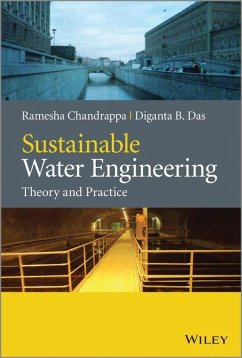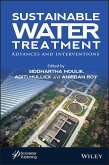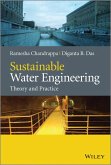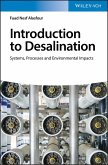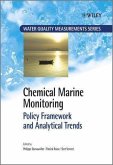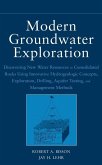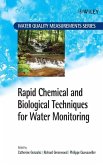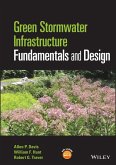

Alle Infos zum eBook verschenken

- Format: PDF
- Merkliste
- Auf die Merkliste
- Bewerten Bewerten
- Teilen
- Produkt teilen
- Produkterinnerung
- Produkterinnerung

Hier können Sie sich einloggen

Bitte loggen Sie sich zunächst in Ihr Kundenkonto ein oder registrieren Sie sich bei bücher.de, um das eBook-Abo tolino select nutzen zu können.
Ensuring safe and plentiful supplies of potable water (both now and for future generations) and developing sustainable treatment processes for wastewater are among the world's greatest engineering challenges. However, sustainability requires investment of money, time and knowledge. Some parts of the world are already working towards this goal but many nations have neither the political will nor the resources to tackle even basic provision and sanitation. Combining theory and practice from the developing and developed worlds with high- and low-tech, high- and low-cost solutions, this book…mehr
- Geräte: PC
- ohne Kopierschutz
- eBook Hilfe
- Größe: 33.39MB
![Sustainable Water Treatment (eBook, PDF) Sustainable Water Treatment (eBook, PDF)]() Sustainable Water Treatment (eBook, PDF)173,99 €
Sustainable Water Treatment (eBook, PDF)173,99 €![Sustainable Water Engineering (eBook, ePUB) Sustainable Water Engineering (eBook, ePUB)]() Ramesha ChandrappaSustainable Water Engineering (eBook, ePUB)117,99 €
Ramesha ChandrappaSustainable Water Engineering (eBook, ePUB)117,99 €![Introduction to Desalination (eBook, PDF) Introduction to Desalination (eBook, PDF)]() Fuad Nesf AlasfourIntroduction to Desalination (eBook, PDF)93,99 €
Fuad Nesf AlasfourIntroduction to Desalination (eBook, PDF)93,99 €![Chemical Marine Monitoring (eBook, PDF) Chemical Marine Monitoring (eBook, PDF)]() Chemical Marine Monitoring (eBook, PDF)136,99 €
Chemical Marine Monitoring (eBook, PDF)136,99 €![Modern Groundwater Exploration (eBook, PDF) Modern Groundwater Exploration (eBook, PDF)]() Robert A. BissonModern Groundwater Exploration (eBook, PDF)131,99 €
Robert A. BissonModern Groundwater Exploration (eBook, PDF)131,99 €![Rapid Chemical and Biological Techniques for Water Monitoring (eBook, PDF) Rapid Chemical and Biological Techniques for Water Monitoring (eBook, PDF)]() Rapid Chemical and Biological Techniques for Water Monitoring (eBook, PDF)156,99 €
Rapid Chemical and Biological Techniques for Water Monitoring (eBook, PDF)156,99 €![Green Stormwater Infrastructure Fundamentals and Design (eBook, PDF) Green Stormwater Infrastructure Fundamentals and Design (eBook, PDF)]() Allen P. DavisGreen Stormwater Infrastructure Fundamentals and Design (eBook, PDF)123,99 €
Allen P. DavisGreen Stormwater Infrastructure Fundamentals and Design (eBook, PDF)123,99 €-
-
-
Dieser Download kann aus rechtlichen Gründen nur mit Rechnungsadresse in A, B, BG, CY, CZ, D, DK, EW, E, FIN, F, GR, HR, H, IRL, I, LT, L, LR, M, NL, PL, P, R, S, SLO, SK ausgeliefert werden.
- Produktdetails
- Verlag: Wiley-IEEE Press
- Seitenzahl: 432
- Erscheinungstermin: 12. Juni 2014
- Englisch
- ISBN-13: 9781118541012
- Artikelnr.: 41086222
- Verlag: Wiley-IEEE Press
- Seitenzahl: 432
- Erscheinungstermin: 12. Juni 2014
- Englisch
- ISBN-13: 9781118541012
- Artikelnr.: 41086222
- Herstellerkennzeichnung Die Herstellerinformationen sind derzeit nicht verfügbar.
Abbreviations xiii
Glossary xvii
1 Water Crisis 1
1.1 Water Resource Issues 6
1.1.1 Water Footprint 8
1.2 Climate Change and Its Influence on Global Water Resources 9
1.3 Protection and Enhancement of Natural Watershed and Aquifer
Environments 12
1.4 Water Engineering for Sustainable Coastal and Offshore Environments 12
1.5 Endangering World Peace and Security 13
1.6 Awareness among Decision Makers and the Public across the World 15
1.7 Criteria for Sustainable Water Management 16
1.8 Water Scarcity and Millennium Development Goals 18
1.9 Lack of Access to Clean Drinking Water and Sanitation 19
1.10 Fragmentation of Water Management 20
1.11 Economics and Financial Aspects 22
1.11.1 Water Treatment and Distribution 24
1.11.2 Wastewater Treatment, Collection and Disposal 27
1.12 Legal Aspects 28
References 30
2 Requirements for the Sustainability of Water Systems 35
2.1 History of Water Distribution and Wastewater Collection 38
2.2 Integrated Water Management 40
2.3 Sewerage Treatment and Urban Pollution Management 44
2.4 Conventional Water Supply 45
2.4.1 Features 49
2.4.2 Capacity and Pressure Requirements 50
2.4.3 Design and Hydraulic Analysis of Distribution System 52
2.4.4 Unsustainable Characteristics 55
2.4.5 Sustainable Approach 64
2.5 Conventional Wastewater Collection Systems 71
2.5.1 Features 71
2.5.2 Unsustainable Characteristics 77
2.5.3 Sustainable Approach 79
References 80
3 Water Quality Issues 83
3.1 Water-Related Diseases 84
3.1.1 Transmission Vectors 85
3.1.2 Field Testing and Monitoring 85
3.1.3 Village-Level Monitoring 89
3.2 Selection Options for Water Supply Source 89
3.2.1 Spring Capping 91
3.2.2 Simple Tube Wells 93
3.2.3 Hand Pumps 95
3.2.4 Rainwater Harvesting 95
3.2.5 Fog and Dew Harvesting 98
3.2.6 Snow Harvesting 99
3.3 On-Site Sanitation 99
3.3.1 Latrines 99
3.3.2 Septic Tanks 103
3.3.3 Aqua Privies 103
3.3.4 Oxidation Pond Treatment Systems 103
3.3.5 Storm Drainage 105
3.4 Water Quality Characteristics of Potable Drinking Water and Wastewater
Effluents 110
3.4.1 Physical Parameters 110
3.4.2 Chemical Parameters 113
3.4.3 Solids in Water 127
3.4.4 Biological Parameters 139
3.5 Standards and Consents 147
3.5.1 Potable Water Standards 147
3.5.2 Wastewater Effluent Standards 148
3.6 Kinetics of Biochemical Oxygen Demand 149
3.7 Water Management for Wildlife Conservation 149
3.8 Water-Quality Deterioration 152
References 153
4 Fundamentals of Treatment and Process Design, and Sustainability 163
4.1 History of Water and Wastewater Treatment Regulatory Issues across the
World 164
4.1.1 Low-Tech versus Hi-Tech 165
4.1.2 Low Cost versus High Cost 167
4.2 Design Principles for Sustainable Treatment Systems 168
4.2.1 Low Carbon 168
4.2.2 Low Energy 168
4.2.3 Low Chemical Use 172
4.2.4 Modelling of Treatment Processes to Attain Sustainability 172
4.2.5 Operation, Management, Financial, Socio-Economic Aspect 173
4.3 Preliminary and Primary Treatment 174
4.3.1 Screening 174
4.3.2 Coarse-Solid Reduction 174
4.3.3 Grease Removal Chamber 174
4.3.4 Flow Equalization 177
4.3.5 Mixing and Flocculation 177
4.3.6 Sedimentation 180
4.3.7 Flotation 183
4.4 Secondary Treatment 185
4.4.1 Biological Treatment 185
4.4.2 Vermifiltration 202
4.4.3 Chemical Treatment 202
4.5 Tertiary Treatment 203
4.5.1 Filtration 203
4.5.2 Activated Carbon Treatment 205
4.5.3 Ion Exchange 206
4.5.4 Forward and Reverse Osmosis, Membrane Filtration, Membrane
Bioreactor, Membrane Distillation, and Electro Dialysis 206
4.5.5 Air Stripping 207
4.5.6 Disinfection and Fluoridation 209
4.5.7 Removal of Specific Constituents 211
4.6 Emerging Technologies 211
4.6.1 Nanotechnology applied for Water Purification 212
4.6.2 Photocatalysis 212
4.6.3 Evaporation 214
4.6.4 Incineration 214
4.6.5 Sono-Photo-Fenton Process 214
4.7 Residual Management 215
4.7.1 Thickening 216
4.7.2 Drying 216
4.7.3 Stabilization 216
4.7.4 Digestion 217
4.7.5 Composting 217
4.7.6 Dewatering 218
4.7.7 Incineration 218
4.7.8 Remediation of Contaminants in Subsurface 219
4.8 Portable Water Purification Kit 220
4.9 Requirements of Electrical, Instrumentation and Mechanical Equipment in
Water and Wastewater Treatment to Achieve Sustainability 220
4.9.1 Electrical Equipment and Energy Requirement 221
4.9.2 Piping and Instrumentation 223
4.9.3 Mechanical Equipment Requirements and Related Issues 224
4.9.4 Systems and Operational Issues 224
4.9.5 Real-Time Control 225
4.9.6 Indicators of Sustainable Performance; Systems Approach for
Sustainability Assessment of Water Infrastructure 225
4.9.7 Troubleshooting 226
4.9.8 Operational Checks for the STP 228
4.9.9 Design, Construction and Engineering Checks for the WWTP 228
4.9.10 Odour Management 228
References 232
5 Sustainable Industrial Water Use and Wastewater Treatment 237
5.1 Sustainable Principles in Industrial Water Use and Wastewater Treatment
237
5.1.1 Industries with High Dissolved Solids 240
5.1.2 Industries/Activities with High Inorganic Content 242
5.2 Industries with Low Dissolved Solids 282
5.2.1 Industries with Low Amounts of Inorganic Materials 282
5.2.2 Industries Dealing with Low Dissolved Organic Material 284
References 292
6 Sustainable Effluent Disposal 297
6.1 Dissolved Oxygen Sag Curves, Mass Balance Calculations and Basic River
Models 299
6.2 Disposal Options and Impact on Environment 302
6.2.1 Ocean Disposal 304
6.2.2 Disposal into Fresh Water Bodies 306
6.2.3 On-Land Disposal 308
6.3 Sustainable Reuse Options and Practice 310
6.3.1 Toilet Flushing 317
6.3.2 Floor Washing 317
6.3.3 Sustainable Wastewater Irrigation 317
6.3.4 Nonpotable Industrial Use 320
References 326
7 Sustainable Construction of Water Structures 331
7.1 Sustainable Construction - Principles 333
7.1.1 Green Building 337
7.1.2 Cementless Construction 339
7.1.3 Choosing Eco-Friendly Construction Material 340
7.1.4 Energy Saving during Construction 341
7.1.5 Precautions to be Taken during Construction to save Energy during
Operations 343
7.2 Intake Structures 343
7.3 Treatment Plants 344
7.4 Water Storage and Distribution Systems 344
7.5 Wastewater Collection and Disposal System 348
References 350
8 Safety Issues in Sustainable Water Management 353
8.1 Health, Safety and Sustainability 356
8.2 Safety of Consumer versus Operator 359
8.3 Safety of People and Animals other than Consumers and Operators 370
8.4 Safety Issues during Construction 377
8.4.1 Electrical Protective Devices 380
8.5 Chemical Handling and Storage 380
8.5.1 Chlorine 382
8.5.2 Herbicides/Pesticides 383
8.6 Safety during Water/Wastewater Treatment Plant Operation 383
8.6.1 Work-Permit System 398
8.7 Disaster Management 398
References 400
Index 405
Abbreviations xiii
Glossary xvii
1 Water Crisis 1
1.1 Water Resource Issues 6
1.1.1 Water Footprint 8
1.2 Climate Change and Its Influence on Global Water Resources 9
1.3 Protection and Enhancement of Natural Watershed and Aquifer
Environments 12
1.4 Water Engineering for Sustainable Coastal and Offshore Environments 12
1.5 Endangering World Peace and Security 13
1.6 Awareness among Decision Makers and the Public across the World 15
1.7 Criteria for Sustainable Water Management 16
1.8 Water Scarcity and Millennium Development Goals 18
1.9 Lack of Access to Clean Drinking Water and Sanitation 19
1.10 Fragmentation of Water Management 20
1.11 Economics and Financial Aspects 22
1.11.1 Water Treatment and Distribution 24
1.11.2 Wastewater Treatment, Collection and Disposal 27
1.12 Legal Aspects 28
References 30
2 Requirements for the Sustainability of Water Systems 35
2.1 History of Water Distribution and Wastewater Collection 38
2.2 Integrated Water Management 40
2.3 Sewerage Treatment and Urban Pollution Management 44
2.4 Conventional Water Supply 45
2.4.1 Features 49
2.4.2 Capacity and Pressure Requirements 50
2.4.3 Design and Hydraulic Analysis of Distribution System 52
2.4.4 Unsustainable Characteristics 55
2.4.5 Sustainable Approach 64
2.5 Conventional Wastewater Collection Systems 71
2.5.1 Features 71
2.5.2 Unsustainable Characteristics 77
2.5.3 Sustainable Approach 79
References 80
3 Water Quality Issues 83
3.1 Water-Related Diseases 84
3.1.1 Transmission Vectors 85
3.1.2 Field Testing and Monitoring 85
3.1.3 Village-Level Monitoring 89
3.2 Selection Options for Water Supply Source 89
3.2.1 Spring Capping 91
3.2.2 Simple Tube Wells 93
3.2.3 Hand Pumps 95
3.2.4 Rainwater Harvesting 95
3.2.5 Fog and Dew Harvesting 98
3.2.6 Snow Harvesting 99
3.3 On-Site Sanitation 99
3.3.1 Latrines 99
3.3.2 Septic Tanks 103
3.3.3 Aqua Privies 103
3.3.4 Oxidation Pond Treatment Systems 103
3.3.5 Storm Drainage 105
3.4 Water Quality Characteristics of Potable Drinking Water and Wastewater
Effluents 110
3.4.1 Physical Parameters 110
3.4.2 Chemical Parameters 113
3.4.3 Solids in Water 127
3.4.4 Biological Parameters 139
3.5 Standards and Consents 147
3.5.1 Potable Water Standards 147
3.5.2 Wastewater Effluent Standards 148
3.6 Kinetics of Biochemical Oxygen Demand 149
3.7 Water Management for Wildlife Conservation 149
3.8 Water-Quality Deterioration 152
References 153
4 Fundamentals of Treatment and Process Design, and Sustainability 163
4.1 History of Water and Wastewater Treatment Regulatory Issues across the
World 164
4.1.1 Low-Tech versus Hi-Tech 165
4.1.2 Low Cost versus High Cost 167
4.2 Design Principles for Sustainable Treatment Systems 168
4.2.1 Low Carbon 168
4.2.2 Low Energy 168
4.2.3 Low Chemical Use 172
4.2.4 Modelling of Treatment Processes to Attain Sustainability 172
4.2.5 Operation, Management, Financial, Socio-Economic Aspect 173
4.3 Preliminary and Primary Treatment 174
4.3.1 Screening 174
4.3.2 Coarse-Solid Reduction 174
4.3.3 Grease Removal Chamber 174
4.3.4 Flow Equalization 177
4.3.5 Mixing and Flocculation 177
4.3.6 Sedimentation 180
4.3.7 Flotation 183
4.4 Secondary Treatment 185
4.4.1 Biological Treatment 185
4.4.2 Vermifiltration 202
4.4.3 Chemical Treatment 202
4.5 Tertiary Treatment 203
4.5.1 Filtration 203
4.5.2 Activated Carbon Treatment 205
4.5.3 Ion Exchange 206
4.5.4 Forward and Reverse Osmosis, Membrane Filtration, Membrane
Bioreactor, Membrane Distillation, and Electro Dialysis 206
4.5.5 Air Stripping 207
4.5.6 Disinfection and Fluoridation 209
4.5.7 Removal of Specific Constituents 211
4.6 Emerging Technologies 211
4.6.1 Nanotechnology applied for Water Purification 212
4.6.2 Photocatalysis 212
4.6.3 Evaporation 214
4.6.4 Incineration 214
4.6.5 Sono-Photo-Fenton Process 214
4.7 Residual Management 215
4.7.1 Thickening 216
4.7.2 Drying 216
4.7.3 Stabilization 216
4.7.4 Digestion 217
4.7.5 Composting 217
4.7.6 Dewatering 218
4.7.7 Incineration 218
4.7.8 Remediation of Contaminants in Subsurface 219
4.8 Portable Water Purification Kit 220
4.9 Requirements of Electrical, Instrumentation and Mechanical Equipment in
Water and Wastewater Treatment to Achieve Sustainability 220
4.9.1 Electrical Equipment and Energy Requirement 221
4.9.2 Piping and Instrumentation 223
4.9.3 Mechanical Equipment Requirements and Related Issues 224
4.9.4 Systems and Operational Issues 224
4.9.5 Real-Time Control 225
4.9.6 Indicators of Sustainable Performance; Systems Approach for
Sustainability Assessment of Water Infrastructure 225
4.9.7 Troubleshooting 226
4.9.8 Operational Checks for the STP 228
4.9.9 Design, Construction and Engineering Checks for the WWTP 228
4.9.10 Odour Management 228
References 232
5 Sustainable Industrial Water Use and Wastewater Treatment 237
5.1 Sustainable Principles in Industrial Water Use and Wastewater Treatment
237
5.1.1 Industries with High Dissolved Solids 240
5.1.2 Industries/Activities with High Inorganic Content 242
5.2 Industries with Low Dissolved Solids 282
5.2.1 Industries with Low Amounts of Inorganic Materials 282
5.2.2 Industries Dealing with Low Dissolved Organic Material 284
References 292
6 Sustainable Effluent Disposal 297
6.1 Dissolved Oxygen Sag Curves, Mass Balance Calculations and Basic River
Models 299
6.2 Disposal Options and Impact on Environment 302
6.2.1 Ocean Disposal 304
6.2.2 Disposal into Fresh Water Bodies 306
6.2.3 On-Land Disposal 308
6.3 Sustainable Reuse Options and Practice 310
6.3.1 Toilet Flushing 317
6.3.2 Floor Washing 317
6.3.3 Sustainable Wastewater Irrigation 317
6.3.4 Nonpotable Industrial Use 320
References 326
7 Sustainable Construction of Water Structures 331
7.1 Sustainable Construction - Principles 333
7.1.1 Green Building 337
7.1.2 Cementless Construction 339
7.1.3 Choosing Eco-Friendly Construction Material 340
7.1.4 Energy Saving during Construction 341
7.1.5 Precautions to be Taken during Construction to save Energy during
Operations 343
7.2 Intake Structures 343
7.3 Treatment Plants 344
7.4 Water Storage and Distribution Systems 344
7.5 Wastewater Collection and Disposal System 348
References 350
8 Safety Issues in Sustainable Water Management 353
8.1 Health, Safety and Sustainability 356
8.2 Safety of Consumer versus Operator 359
8.3 Safety of People and Animals other than Consumers and Operators 370
8.4 Safety Issues during Construction 377
8.4.1 Electrical Protective Devices 380
8.5 Chemical Handling and Storage 380
8.5.1 Chlorine 382
8.5.2 Herbicides/Pesticides 383
8.6 Safety during Water/Wastewater Treatment Plant Operation 383
8.6.1 Work-Permit System 398
8.7 Disaster Management 398
References 400
Index 405
